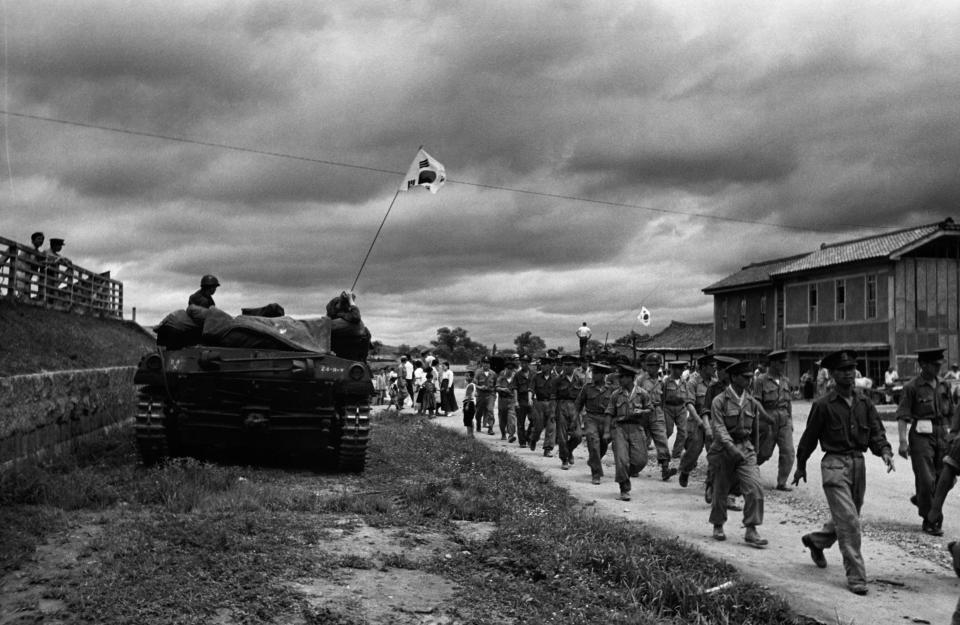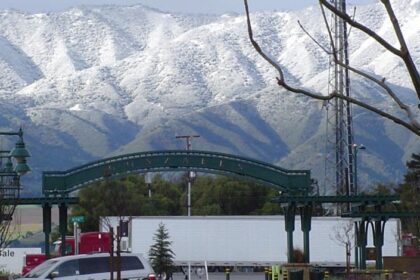The Korean War was a war between North Korea, with the support of China and the Soviet Union, and South Korea, with the support of the United States. The war began on June 25, 1950, when North Korea invaded South Korea, following a series of clashes along the border. The United Nations, with the United States as the principal force, came to the aid of South Korea, while China and the Soviet Union, supported North Korea’s advance. Take a look below for 30 more fascinating and interesting facts about the Korean War.
1. The Korean war began at 4:30 AM on June 25, 1950 and ended on July 27, 1953. There are still more than 7,000 United States soldiers missing in action from the war.
2. The North Korean movie Unsung Heroes, shows members of the South Korean military committing war crimes alongside the United States. In its cast were several United States soldiers that defected to North Korea.
3. The Korean War was the first military action of the Cold War.
4. North Koreans who were born after the Korean War in the late 1950s, are on average about 2 inches shorter than South Koreans.
5. In March, 2013, North Korea declared the 1953 armistice that rendered the Korean War invalid.
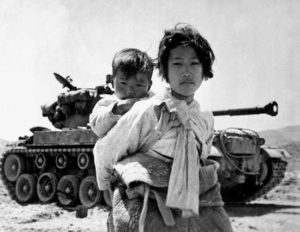
6. The United States dropped more bombs in Korea than in the entire Pacific theater during World War II. In fact, 635,000 tons of bombs as well as 32,557 tons of napalm were dropped in Korea.
7. One of the most embarrassing incidents during the Korean War was when the United States Army Brigadier General Francis Townsend Dodd was held hostage by North Korean prisoners of war during a camp uprising. The incident led to a North Korean propaganda victory and Dodd suffered career ending embarrassment.
8. Officially, the Korean War was just police action since President Truman never asked Congress for a formal declaration of war.
9. The first Chinese-American United States Marine Corps officer, Kurt Lee, confused the opposing Chinese troops by yelling out orders in Mandarin during the Inchon battle in the Korean War.
10. Eduardo C. Gomez, a soldier in the Korean War, took out an enemy tank by crawling across an open rice field, getting up on top of the tank, opening the hatch and dropping a live grenade inside.
11. Al Gore’s father proposed in Congress that something cataclysmic had to be done to end the Korean War. His suggestion was creating a radiation belt on the 38th parallel using atomic bombs to turn the border of North and South Korea into a permanent toxic wasteland.
12. Even though 16 countries participated in the Korean War, it’s still not considered a world war. 15 United Nations countries sent combat troops to Korea, they were, Australia, Belgium, Canada, Colombia, Ethiopia, France, Great Britain, Greece, Holland, Luxembourg, New Zealand, Philippines, South Africa, Thailand, and Turkey. 4 countries sent medical aid, they were, India, Italy, Norway and Sweden.
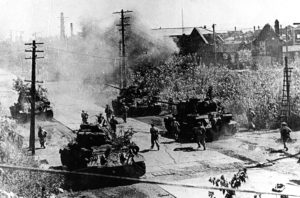
13. During the Korean War, the South Korean government provided women for its troops. According to one account, the government standard of performance for these women was to service at least 29 men a day. Intercourse should not last longer than 30 minutes so the prostitute could move on to other men and make the maximum daily profit.
14. There were 7,245 American prisoners of war during the Korean War. Of these, 2,806 died while in captivity and 4,418 were eventually returned to military control. 21 refused any repatriation.
15. About 86,300 Korean War veterans are women, which makes up 7% of the estimated number of all female veterans.
16. Many soldiers died of frostbite during the Korean War before ever reaching the battlefields. The temperature in some areas fell below zero for long periods of time.
17. North Koreans never released 900 American troops who were alive at the end of the Korean War. In 1996, as many as 15 of them might have still been alive.
18. Disobeying orders, United States officer Dave Teich took 4 tanks to save 65 men from 300,000 Chinese soldiers attacking their position during the war.
19. President Eisenhower allowed his son to serve in the Korean War on the condition that he would promise never to be captured alive.
20. After Douglas MacArthur was relieved of command in the Korean War in 1951, Emperor Hirohito visited him to offer his condolences. This is the first time that a Japanese Emperor had ever visited a foreigner who wasn’t a diplomat or royalty.
21. Until the middle of the Korean War, the P-51 Mustang, a World War II era fighter, was used by the United States Air Force and even served with the Dominican Republic until 1984.
22. During the war, the 700 British Gloucestershire Regiment held the advance of 27,000 soldiers from the Chinese 63rd Army. After the battle, the Chinese had 11,000 dead and the British only had 58.
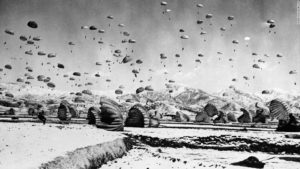
23. During the war, the intravenous use of amphetamines was first reported. Many soldiers returning from the war brought the habit back with them.
24. Commander in Chief of the United Nations Command, United States Army General Mark Clark signed the armistice for the United States that ended the Korean War on July 27, 1953.
25. The world’s first all-jet dogfight occurred during the Korean War on September 8, 1950.
26. Pablo Picasso’s 1951 Massacre in Korea depicts acts of mass killing carried out by North Koreans, South Koreans and American forces in the town of Sinchon in North Korea, during the war.
27. MASH, or Mobile Army Surgical Hospital, units were first used in the Korean War. Their purpose was to be closer to combat zones so they could save more lives.
28. In 1952, during the Korean War, the United Nations Command air forces completely knocked out power in North Korea for 2 weeks by permanently destroying 90% of the 13 hydroelectric generating facilities targeted.
29. Astronaut John Glenn and baseball legend Ted Williams were wingmen in the Korean War.
30. On June 28, 1950, just days after the start of the Korean War, South Korean President Syngman Rhee ordered the Bodo League Massacre, which resulted in the deaths of more than 100,000 suspected communist sympathizers and their families in South Korea.

